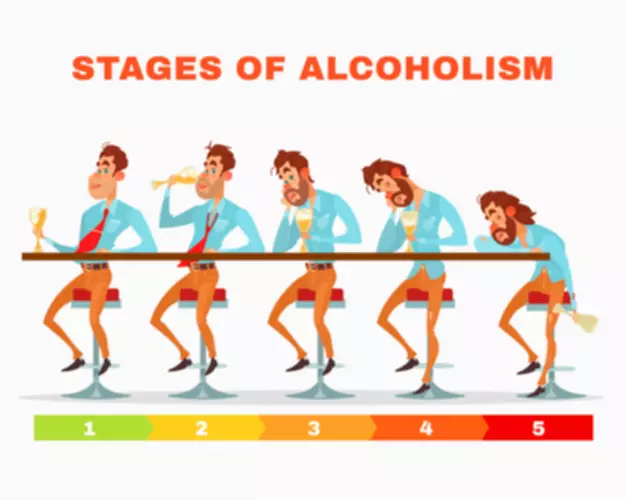No single approach to or study of a limited segment of the drug user population can provide the complete, accurate information needed for useful estimates. Consequently, efforts should be made to bridge the gulfs between survey research, which is traditionally conducted by sociologists and psychologists, and ethnographic research, which largely falls within the domain of anthropology. Moreover, steps should be taken to strengthen the links between investigators with expertise in these areas. As noted earlier, there is an important exception to the lack of risk reduction in sexual behavior. Prostitutes have shown a willingness to use condoms with clients, although they report safer sexual practices less often in the context of personal relationships. Substance use disorder is a complex phenotype, and is the result of a series of causalinfluences such as genetic factors, diverse environmental factors, and predicteddrug-induced effects1–4.
Harm Reduction Knowledge
HIV among people who inject drugs: Data factsheet – European Monitoring Centre for Drugs and Drug Addiction (EMCDDA)
HIV among people who inject drugs: Data factsheet.
Posted: Thu, 30 Nov 2023 08:00:00 GMT [source]
Among a sample of persons in western New York who inject drugs and were hospitalized or treated in the emergency department for a bacterial and fungal infection, Staphylococcus aureus was the most common pathogen. Nearly all persons with such infections injected opioids; most were not offered medication-assisted treatment to reduce injection drug use. Approximately one quarter of all AIDS cases diagnosed in this country among adults and adolescents is related to IV drug use (Schuster, 1988). However, because of the very strict definition of AIDS that has been established for surveillance purposes, it is thought that the number of reported cases underestimates the size of the problem.
Preventive Care Recommendations
- For example, market models tend to exclude social and psychological factors, a gap that results in the inability of the model to explain changes in consumption levels caused by the voluntary cessation of use by individual users.
- However, there may be variation by geographic area that will continue to limit the capacity to generalize these findings beyond the local population.
- This may be related to limited knowledge and omission by healthcare providers surrounding the multiple potential amplifiers of bacterial infection risk during the injection process.
- Of 70 patients with at least one pathogen identified from a clinical culture, 13 (19%) had a polymicrobial infection.
- A comprehensive, accurate assessment of the prevalence of IV drug use is largely dependent on an adequate understanding of the development, maintenance, and cessation of heroin consumption patterns, the diversity of drug-related behaviors, and the movement in and out of the IV drug-using population (turnover).
Finally, two IV drug users, particularly if they are sexual partners or have a very close personal relationship, may consider a single needle and syringe set to be theirs together. Both may use the set without thinking of it as sharing, which for them may refer to letting someone other than one of the joint owners use the equipment. The AIDS epidemic and the role of IV drug use in the transmission of HIV have also focused the nation’s attention on the prevention of drug use and the efficacy of drug treatment programs. These issues are of great concern iv drug use to the Academy complex1 and to the nation; yet it is not possible to review the extensive literatures of these topics here. The committee believes that primary prevention of drug use is an important national goal, but questions remain as to whether even substantial improvement in primary prevention would reduce injection behavior. Because many people report smoking marijuana and relatively few go on to inject heroin or other injectable drugs, the efficiency of attempts to stop marijuana use as a way to prevent IV drug use is questionable.
What is an antibiotic?
- The second set of CDC estimates of the total number of IV drug users in the United States (CDC, 1987a) indicates that more than 1 million people inject illicit drugs.
- Best practice recommendations for SSP for primary and secondary prevention of wounds and SSTIs in PWID.
- Many studies have demonstrated that IVIG is an effective, safe, and tolerable treatment that helps restore the immune system in people with immunodeficiencies.
- Information on substance use history and treatment was collected for a subset of persons whose infections were identified from S.
- Popular lore about heroin users holds that, once they are “hooked,” their appetite for the drug is so great that they will run any risk to obtain it.
- This model was developed in response to providers’ reports of limited experience and comfort surrounding infection control strategies for reducing infections related to IDU [31].
Decontamination—by bleach, alcohol, liquid dish detergent, or hydrogen peroxide—is more likely to be effective if the syringe is flushed to at least the highest level reached by the infected user’s injection. Bleach, alcohol, and hydrogen peroxide have been shown to inactivate the virus in vitro (Resnick et al., 1986; Flynn et al., 1988b). However, the sterilization of injection equipment is not without problems, as some disinfectants may dissolve the silicone lubricant of the syringe plunger, thus making its operation quite stiff. Popular lore about heroin users holds that, once they are “hooked,” their appetite for the drug is so great that they will run any risk to obtain it. In contrast, research has shown that users adjust their consumption to such external factors as price and availability (Waldorf, 1970; Hanson et al., 1985).


A comprehensive, accurate assessment of the prevalence of IV drug use is largely dependent on an adequate understanding of the development, maintenance, and cessation of heroin consumption patterns, the diversity of drug-related behaviors, and the movement in and out of the IV drug-using population (turnover). The use of multiple drugs and increased cocaine consumption have made the description of drug-use patterns quite difficult (Fishburne et al., 1980; Johnston et al., 1981; Bray et al., 1982; B. D. Johnson and Goldstein, 1984). Patterns of illicit drug use in general, and heroin use in particular, have changed markedly over the past decade (Bray et al., 1982; Hubbard et al., 1985b). Illicit drugs and their markets also vary from city to city (Person et al., 1976; Schlenger and Greenberg, 1978) and from neighborhood to neighborhood (Greenberg and Roberson, 1978). In addition, different ethnic groups have very different patterns of use (Austin et al., 1977; Hubbard et al., 1983) and obtain drugs from different sources. One important factor involves the level of understanding a respondent brings to the interview or questionnaire.

PWID admitted to hospital with SBI should be treated in a multidisciplinary manner with particular focus on avoidance of withdrawal symptoms to limit failure to complete treatment and potential high-risk behaviors while hospitalized. Participants reported using intravenous drugs while hospitalized and noted unsafe injection practices (e.g., needle re-use, using medically placed venous catheters) while doing so. Managing withdrawal symptoms in hospitalized PWID with SBI would ultimately decrease risky injection practices that may lead to severe complications, elopement or leaving the hospital against medical advice, as well as ensuring completion of treatment course [50].
Intravenous Injection
However, in the study of IV drug users from San Francisco, both blacks and Latinos were found to have a greater prevalence of HIV infection than whites, a finding that persisted after adjusting for reported needle-sharing (Chaisson et al., 1987b). There may be behavioral differences in IV drug-use and needle-sharing behaviors across ethnic groups that are actually more accurately measured by questions on ethnicity than by questions on the behaviors themselves. Clearly, the amount of error in measuring ethnicity is likely to be much less than the error in measuring complex behavior over long periods of time.
This awareness of AIDS and knowledge of the routes of transmission developed prior to any AIDS prevention programs for IV drug users in New York. It reportedly arose from information transmitted through the mass media and through the informal communication networks among IV drug users in the city. The sharing of injection equipment appears to be common behavior in both IV drug users who inject frequently and in those who inject less often (Friedland et al., 1985). However, more frequent injections are likely to mean more episodes with shared equipment, thus increasing the likelihood of HIV infection. In addition, for IV drug users who are addicted, the symptoms of drug withdrawal can heighten the sense of urgency or desire for the drug and decrease the likelihood that safer injection practices will be used. Finally, whether an IV drug user did most of his or her injecting prior to 1975 or later will greatly affect his or her risk of HIV infection.
